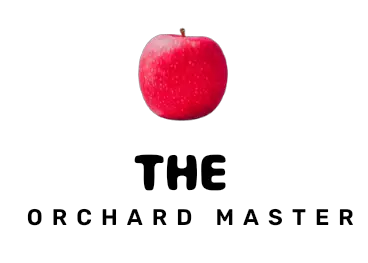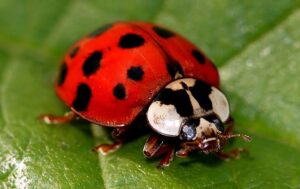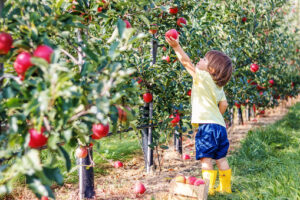Introduction:
Pesticides play a vital role in agriculture, protecting crops from diseases, insects, and plant pathogens, thereby enhancing crop productivity. The effectiveness of these pesticides largely depends on their formulation, which refers to the physical state and the way these pesticides are packed and delivered. This article provides a detailed overview of various pesticide formulations used in agriculture.
Liquid Formulations:
- Emulsifiable Concentrates (EC): EC stands for Emulsifiable Concentrate, which is a common type of pesticide formulation in agriculture. An EC formulation consists of a liquid active ingredient, a petroleum-based solvent, and an emulsifying agent. The emulsifying agent allows the oil-based active ingredient and solvent to mix with water, forming an emulsion. Once added to water and agitated, an EC formulation creates a milky mixture, which is then sprayed onto crops. Before and during application, it’s crucial to keep the mixture well agitated to keep the active ingredient evenly dispersed. One of the primary advantages of EC formulations is their versatility and ease of use. Because they are liquid, they can be easily mixed and sprayed using standard equipment. Additionally, EC formulations tend to provide excellent penetration, making them effective against certain types of pests. However, there are also some drawbacks to ECs. The solvents in ECs can be phytotoxic to some plants and can also cause harm to rubber or plastic sprayer parts over time. A higher potential for runoff exists with EC formulations due to their oil-based nature. Lastly, operators must exercise caution because EC formulations are often flammable. Despite these drawbacks, with careful handling, EC formulations offer an effective tool for farmers and gardeners in their continued efforts to safeguard crops from pests.
- Soluble Liquids (SL): This formulation completely dissolves in water, leaving no residues. SL is ideal when looking for less equipment wear.
- Suspension Concentrate (SC). It is one of the most common types of pesticide formulations used in agriculture. In an SC formulation, the active ingredient of the pesticide is suspended in a liquid, typically water, rather than being dissolved. The SC formulation is mixed with water and then sprayed directly onto crops. The active ingredient particles, which are finely ground, become dispersed in the water but don’t fully dissolve. One major advantage of SC formulations is that they do not leave behind an oily residue, unlike some other liquid pesticide formulations, such as Emulsifiable Concentrates (ECs). Additionally, they are easier to handle and less likely to cause blockages in spraying equipment. The risks of unwanted pesticide exposure are also lessened as the SC formulations rarely generate dust or splash. Nevertheless, it is essential to consistently agitate SC formulations before and during use to ensure the active ingredients remain evenly distributed within the water. Overall, SC formulations are a valuable tool in pest management due to their versatility, efficiency, and safety.
Solid Formulations:
- Wettable Powders (WP): These are dry, finely ground solid pesticides that need to be mixed with water before application. They are less hazardous but can be easily drifted by the wind. WP stands for Wettable Powder, a commonly used formulation in pesticides. This formulation consists of a finely ground, dry solid (typically the active ingredient of the pesticide), mixed with an inert carrier substance. Upon mixing with water, these powders disperse to form a suspension. They are “wettable” because the dry powder is treated with a substance to facilitate its spread when combined with water.WP formulations are popular due to their easy handling and storage, less corrosive behavior towards spraying equipment, and the absence of a flammable solvent, making them safer to use. However, there are a few downsides to these formulations. Wettable powders typically don’t stick very well to the surface of plants. Therefore, a sticker or spreader is often added to the spray mix to enhance adhesion and distribution. Another challenge lies in the fact that these formulations can easily drift due to their fine particle size. Moreover, because they don’t dissolve entirely in water, WPs can block spray equipment if they settle out in the spray solution, calling for regular agitation. Despite these challenges, if handled correctly, WP formulations can provide an effective and economical solution for pest control. When using WP formulations, it’s essential to wear protective gear and prevent inhaling the powder. Remember to shake or stir the mixture regularly during application to maintain a uniform solution.
- Water-Dispersible Granules(WG): also known as Water Soluble Granules (SG). This is a popular type of pesticide formulation used in modern agricultureIn a WG formulation, the active pesticide ingredient is incorporated into small, typically clay or other absorbent carrier-based, granules that are designed to break apart and disperse in water. When these granules come into contact with water, they disintegrate, releasing the active ingredient. One of the significant advantages of WG formulations is their easy handling and reduced risk to applicators. They don’t produce dust during handling and thus lower the risk of inhalation exposure. These formulations are very convenient to measure, mix, and apply and cause minimal abrasion to spray equipment. In addition, WG formulations can be less hazardous to non-target organisms in the environment due to the more targeted application achievable with this granular form. Just like with other formulations, proper agitation is needed to keep the pesticide dispersed in the spray mixture. It is necessary to remember that although they disintegrate in water, WG formulations don’t truly dissolve. Therefore, they might leave residues in the tank and can clog filters or nozzles if not managed correctly. Overall, WG formulation offers high performance, user safety, and environmental benefits, making it a preferred choice for many applicators.
- Dusts (D): Dust formulation includes a small number of active ingredients mixed with a dry, finely ground inert carrier like clay or talc. Though easy to use, dusts pose an inhalation risk and are susceptible to wind drift.
Aerosol Formulations:
Aerosols are ready-to-use pesticides packaged under pressure for spray application. This formulation is prepared by dissolving or suspending the active ingredient in a liquid.
Fumigant Formulations:
Fumigants are pesticides that form poisonous gas when applied. Used in soil or closed spaces, they’re effective against soilborne pests and insects in stored grains.
Microencapsulated Formulations:
Microencapsulation involves enclosing pesticides in a plastic coating that slowly breaks down, releasing the pesticide over time. This formulation reduces immediate exposure risks and allows a more controlled release of the pesticides, increasing their effectiveness.
Conclusion:
Pesticide formulation is essential for the effectiveness, safety, and delivery of active ingredients to target pests. Each formulation has its unique attributes and risks, hence understanding these formulations is crucial for their appropriate and safe use. As the world of agriculture continues to evolve, innovations in pesticide formulations strive for efficiency, safety, and environmental friendliness.



